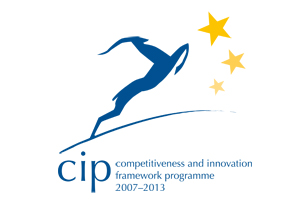| Good Practice Innovation Sheet |
 |
| Items |
Description |
| 1. WHO |
| Key people and organisations (initiator, leader, partners) |
Coastal and Marine Union EUCC and Noordwijk Local Council |
| |
| |
| Key Figures |
Surface |
Inhabitants |
Tourism arrivals |
Tourism nights |
| 51.53 km2 |
24,363 |
N/A |
N/A |
| 2. WHY |
| Reason for taking the good practice action |
Noordwijk is a very popular coastal town with a heavily built-up-sea-front. This tourist town, as the majority of the coastline of the Netherlands, lies below sea level, making the area particularly vulnerable to the impact of climate change and highly dependent on sea defences. In 2003, the Dutch government identified several specific spots (“weak links”) along their coasts that showed to have very low resistance to flooding. One of the most important weak links was located in Noordwijk, in a dune strip of about 125m where dunes were not wide enough to cope with extreme storm events due to climate change. It was therefore of utmost importance to strengthen this part of their coastline in order to protect the area from flooding in the event of sea-level rise. |
| Issues and challenge |
The coastal reinforcement in Noordwijk was intensively debated, especially with respect to the height of the dunes and the length of the dune area. Different alternatives were proposed. The coastal reinforcement had to satisfy the needs and interests of different stakeholders (local and regional authority, business, residents, etc.). Initially a simple dyke was planned, but following consultation with stakeholders led to an adaptation of the original proposal: building a dyke into the dunes |
| 3. HOW |
| Methods /steps / tools used (to develop the good practice) |
In Autumn 2007 Noorwijk initiated strengthening its coast in collaboration with the Rijnland District Water Control Board, the Dutch government and the province of Zuid Holland. A seaward barrage, known as the “dike-in dune” approach, was constructed combining elements of both, hard and soft-engineering. This system involved building a dike at the original dune system identified as a weak link, and covering it with sand, thus creating new dunes. The new dunes were connected to the existing ones, heightened 5 m and broadened by 42 m towards the sea. Consequently a new beach was created. Sand was introduced on the beach and for 800 m out to sea to raise the coastline, helping to get a smooth transition to the beach. Through the new dune system, and parallel to the Queen Wilhelmina Boulevard, a new path was established. |
| 4. RESULT |
| Specific/measurable results, benefits |
This innovative strategy has provided an array of benefits. The “dike in dune” has demonstrated to be an effective approach to provide sufficient protection against flooding and at the same time preserve the ecological, aesthetic and recreational values of the area. The integration of the dike into the dunes has helped to maintain the natural beauty of the dune landscape and it has provided new opportunities for recreation such as the path created on the new dunes, which has become in an attractive site for tourists. Furthermore, this innovative solution has led to a less restrictive planning and building regulations, providing more room for the future coastal development of the municipality. |
| Recognitions (e.g. awards) |
QualityCoast Gold Award 2012-‘13 |
| 5. REFLECTION |
| Lessons learned |
|
| Challenges met |
The dike in dune construction is potentially transferable to other locations and it has served as an example for the tackling of other flood prone areas located along the North Sea coast. A total of ten weak links were identified in the Dutch coast and the aim is to reinforce them by 2015. Noordwijk’s coast was the first weak link to be strengthened. |
| Critical success factors |
The involvement of the different stakeholders and entities during the decision-making and implementation processes was very positive. Their values and perspectives were considered and they had a strong influence for selecting the dike in dune solution. |
| 6. MORE |
| web-references, documents |
www.qualitycoast.info/?page_id=744 |










 Noordwijk (NL)
Noordwijk (NL)















































